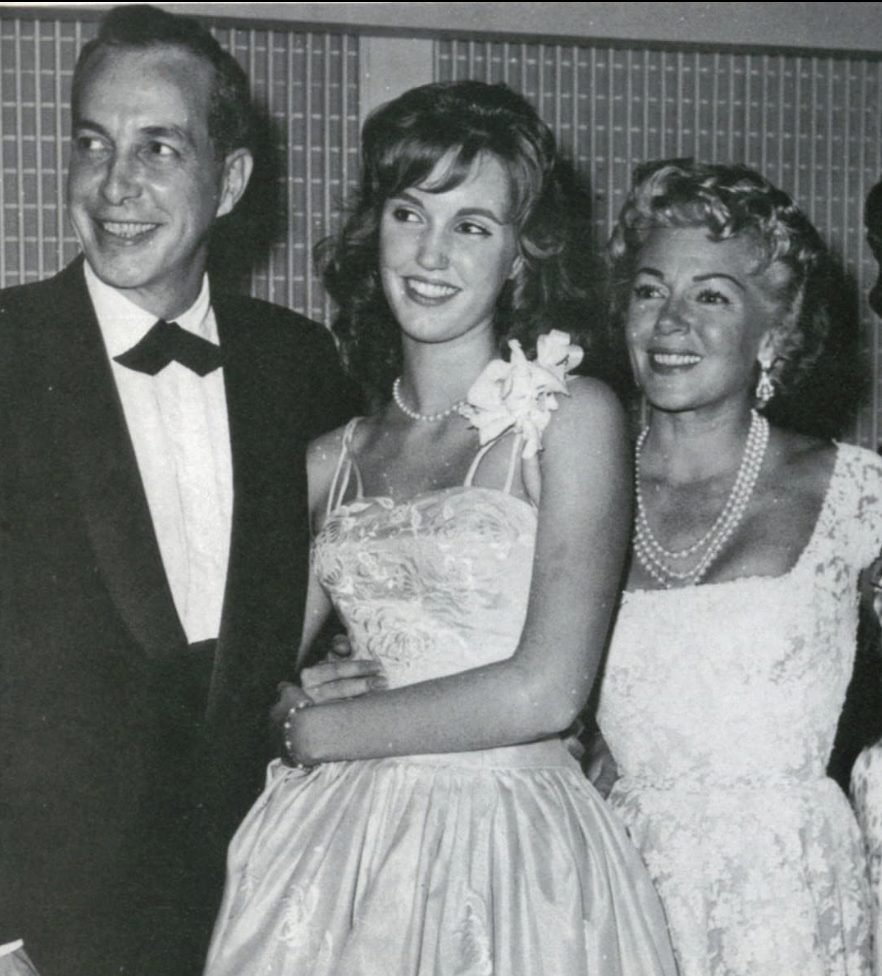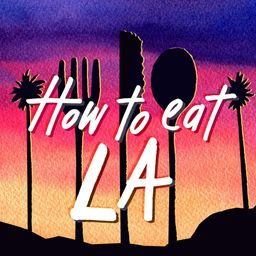Tail O' the Pup's Hollywood Story
Tail O' the Pup was a hot dog stand built in 1946. It was designed by the architect Milton J. Black, who, if this Flickr page (and other sources) is accurate, was beautifully responsible for the look of many of L.A.'s residential areas.
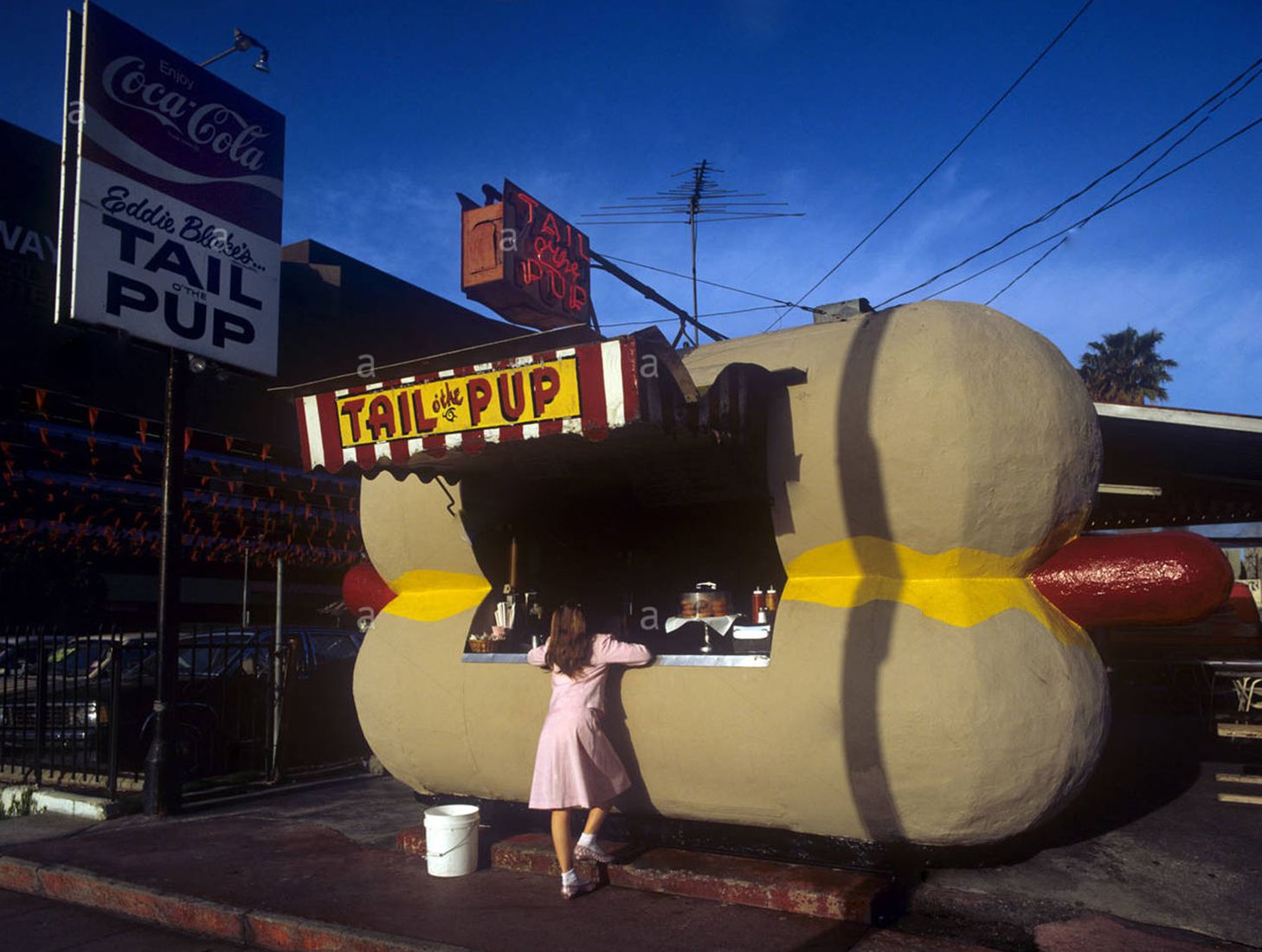
The very first episode of "Columbo" featured two real restaurants: 9000 and Tail O' the Pup. The former was where the suspect (a rich person, of course) dined, the latter is where Columbo tried to weasel some information out of an insurance agent. You can see the scene here.
Tail O' the Pup was a hot dog stand built in 1946. It was designed by the architect Milton J. Black, who, if this Flickr page (and other sources) is accurate, was beautifully responsible for the look of many of L.A.'s residential areas. His Tail O' the Pup rendering was certainly not among his most sophisticated, but it's a perfect example of a strange architectural style that had some enthusiasts in the early 1900s: programmatic. (Also known as "novelty" and "mimetic.")
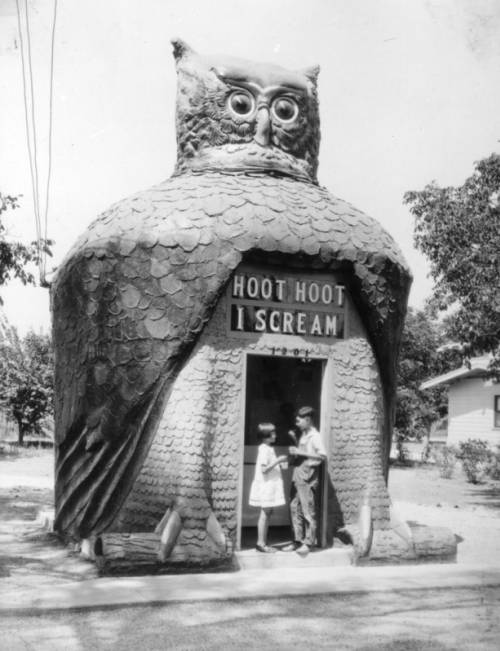
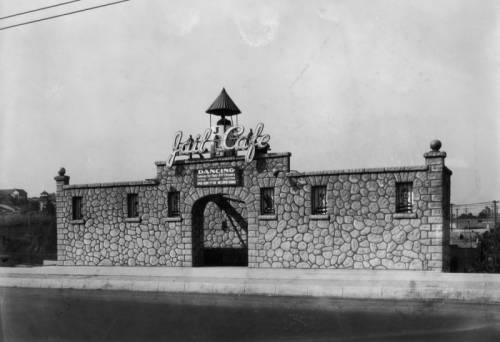
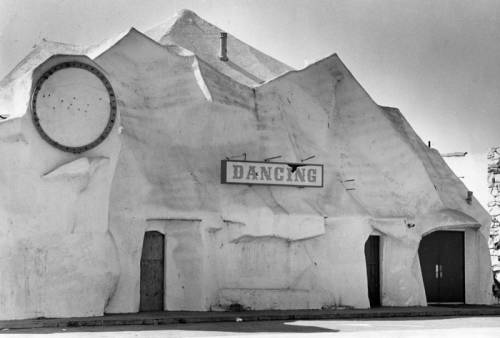
Programmatic architecture is that which mimics another item, usually but not always the item that the store or restaurant specializes in; it can also take on the shape of the name of the establishment, such as Jail Cafe, pictured above. There are examples of this style around the country, but of course the dreamers in Los Angeles took a particular liking to it.
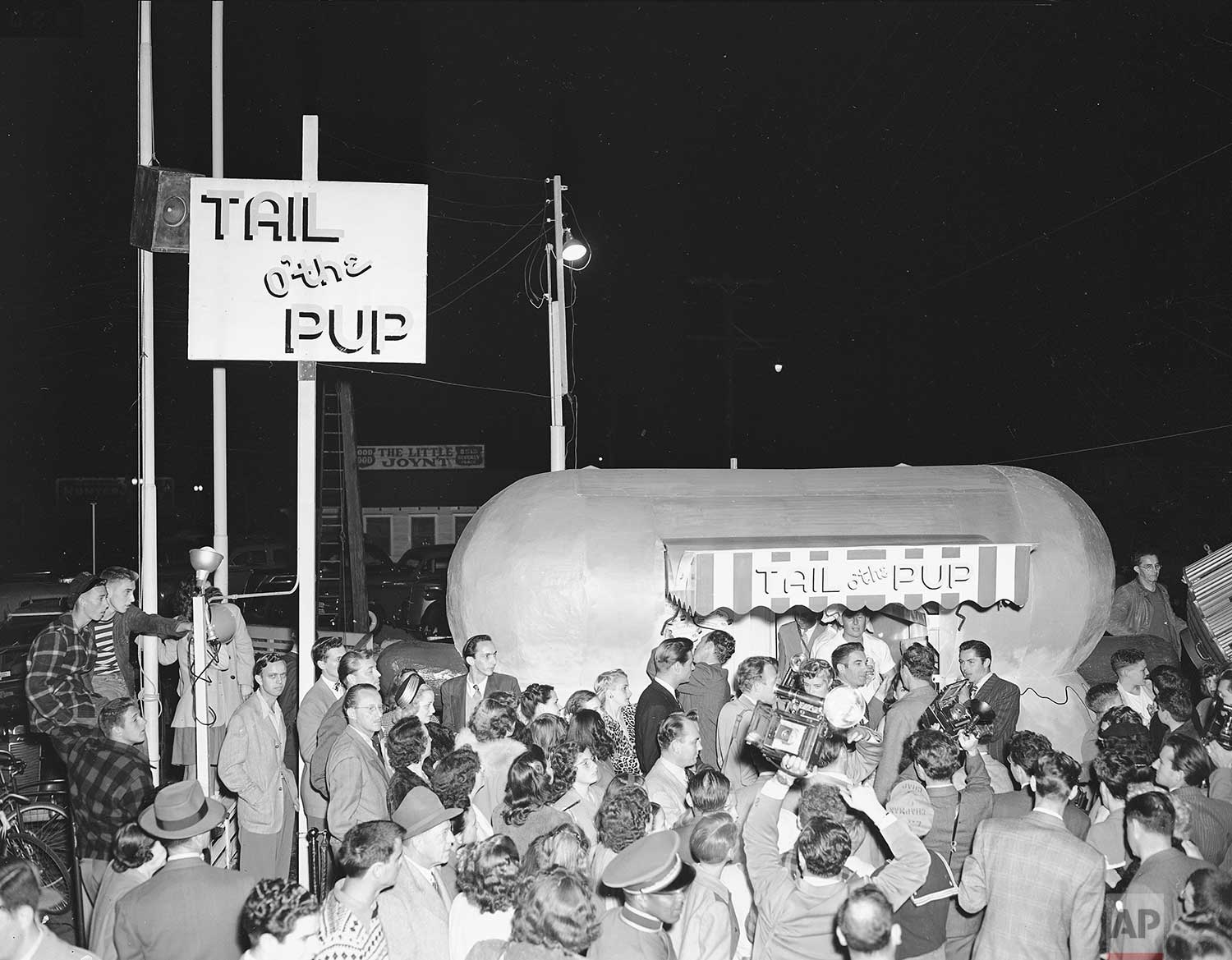
Tail O' the Pup's opening night party was a huge to-do: the owners, while barely known now, were huge stars at the time.
Known as Veloz and Yolanda, the married dancers Frank Veloz and Yolanda Casazza were self-taught ballroom dancers started out winning amateur dance contests in New York, then did club gigs, then a Broadway run, and then moved to Hollywood, first to choreograph and then to appear in films themselves. (Yolanda's dresses are notably gorgeous, and were apparently designed by her husband.)
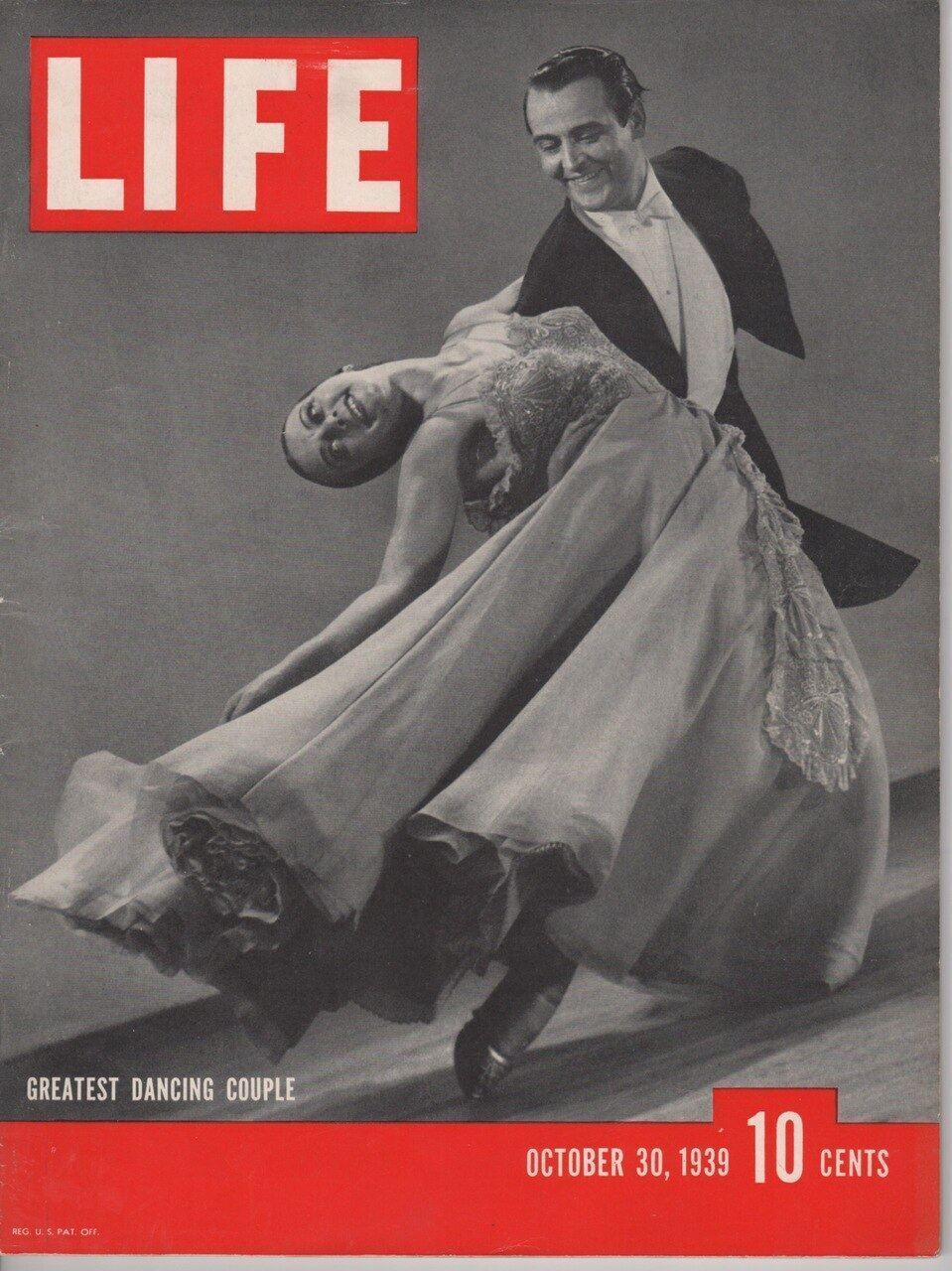
Veloz and Yolanda eventually divorced, and sold the restaurant in 1976 to a man named Eddie Blake - which lead to, for a time, the restaurant's official name being Eddie Blake's Tail O' the Pup.
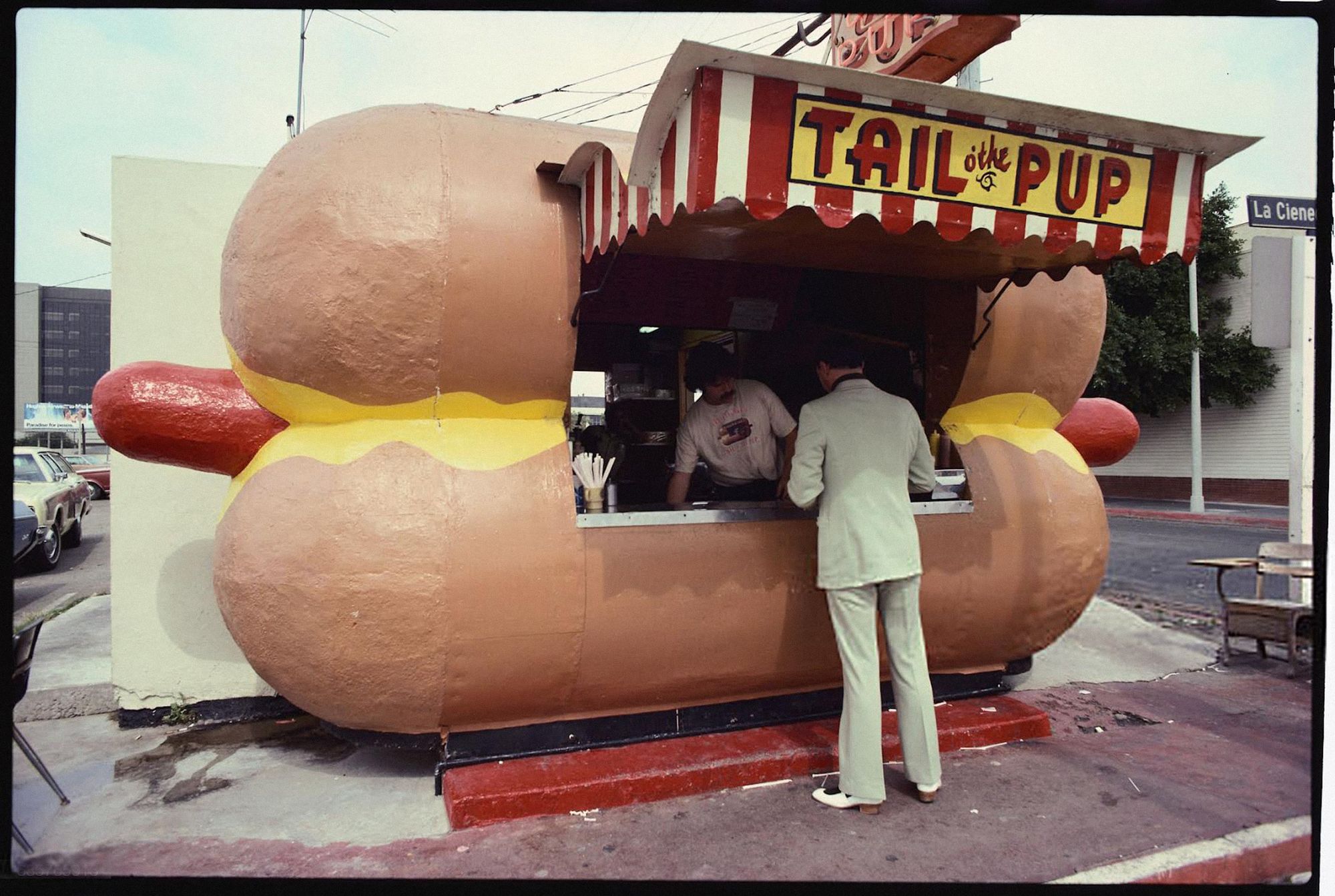
The restaurant was nearly torn down in the 1980s, but was moved from its original location instead. It still retained its cultural cache in that decade, serving as the location for all manner of magazine and album cover photoshoots. As well as TV and movie appearances: not just "Columbo," but also "L.A. Story," "Body Double," and "Ruthless People," among others.
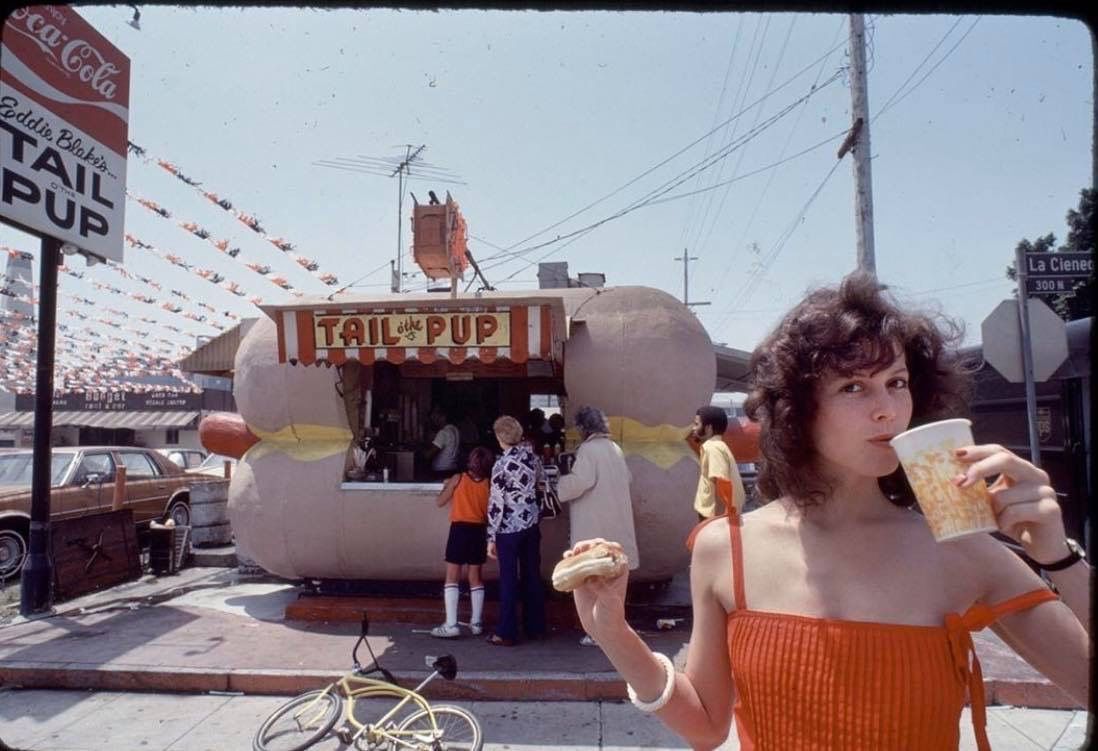
But not even fame can stop a real estate developer, and the hot dog stand closed in 2005, with the land slated for development. Luckily the stand itself was put in storage, and in 2006 it was declared a City of Los Angeles cultural landmark.
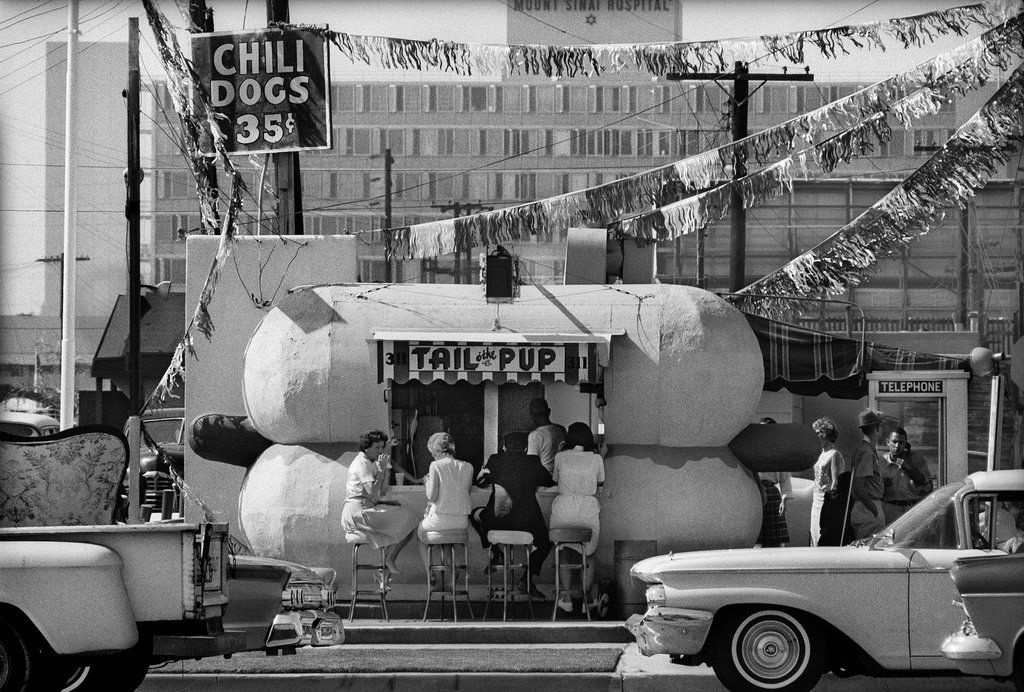
Since then there has been a ton of back and forth about owners and openings and relocations, but Tail O' the Pup did reopen last year, in West Hollywood. The programmatic architecture part is just symbolic now (there's a full restaurant behind it), but it stills speaks to the most whimsical part of L.A.'s spirit.
Thank you to Lisa Strangis for access to photos.
